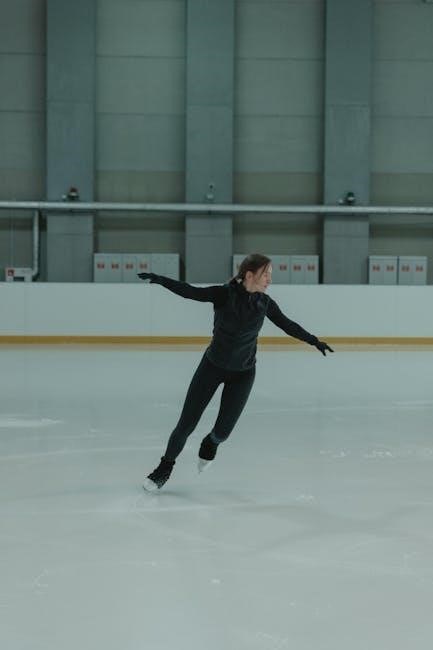Understanding Proximal Hamstring Tendinopathy
Proximal hamstring tendinopathy (PHT) causes deep buttock pain at the hamstring common origin, affecting both athletic and nonathletic populations. It involves inflammation of the hamstring tendons near their attachment to the pelvis.
1.1 Definition and Prevalence
Proximal hamstring tendinopathy (PHT) is a condition characterized by inflammation and degeneration of the hamstring tendons near their origin at the ischial tuberosity. It is commonly seen in both athletic and nonathletic populations, with a higher prevalence in activities involving repetitive hip flexion and knee flexion. PHT accounts for a significant portion of hamstring-related injuries, particularly in runners and athletes engaging in sports requiring sprinting or rapid accelerations. Early diagnosis is crucial to prevent progression and long-term disability.
1.2 Key Characteristics and Symptoms
Proximal hamstring tendinopathy is characterized by deep buttock pain near the ischial tuberosity, often worsening with prolonged sitting or activities like running, cycling, or stair climbing. Patients may experience tenderness to palpation at the hamstring origin, stiffness after rest, and pain during hip flexion or knee extension. Symptoms can vary from mild discomfort to severe pain, impacting daily activities and athletic performance. Accurate diagnosis is essential to differentiate PHT from other causes of buttock pain.
Causes and Risk Factors
Proximal hamstring tendinopathy often results from overuse, repetitive strain, or biomechanical imbalances. Risk factors include prolonged sitting, weak hamstrings, and sudden changes in physical activity levels.
2.1 Athletic vs. Nonathletic Populations
Athletes, particularly runners and those in sports requiring sudden accelerations, are highly prone to PHT due to repetitive strain and high mechanical stress. Nonathletes may develop PHT from prolonged sitting, poor posture, or sudden increases in activity. Both groups share common risk factors like weak hamstrings and poor hip mobility, but athletes often face additional challenges from intense training loads and overuse injuries.
2.2 Biomechanical and Training-Related Factors

Biochemical factors such as muscle imbalances, poor hip and pelvic mobility, and altered movement patterns contribute to PHT. Training-related issues like rapid increases in intensity, volume, or frequency exacerbate the condition. Overuse injuries from repetitive sprinting or stretching can also strain the hamstrings. Additionally, inadequate warm-up routines and improper exercise techniques further predispose individuals to tendon overload, highlighting the importance of addressing these factors in both prevention and treatment strategies.

Diagnosis and Assessment
Diagnosis involves a thorough clinical examination, patient history, and imaging. Pain at the hamstring origin, tenderness, and limited mobility are key indicators, confirmed by ultrasound or MRI scans.

3.1 Clinical Examination and History
A thorough clinical examination and patient history are crucial for diagnosing proximal hamstring tendinopathy. Key findings include deep buttock pain near the hamstring origin, tenderness upon palpation, and restricted mobility. Patients often report pain during activities like sitting, stretching, or running. A detailed history helps identify repetitive strain or traumatic onset. Physical tests, such as the bent knee stretch, can reproduce symptoms. These findings guide the development of targeted exercise programs to address the condition effectively.
3.2 Imaging and Diagnostic Criteria
Imaging plays a key role in confirming proximal hamstring tendinopathy. MRI is the gold standard, revealing tendon thickening, inflammation, or structural changes. Ultrasound can also detect tendon pathology, such as hypoechoic areas or calcifications. Diagnostic criteria include localized pain near the hamstring origin, tenderness on palpation, and pain during activities like prolonged sitting or stretching. These findings, combined with imaging results, help differentiate PHT from other causes of buttock pain, ensuring accurate diagnosis and appropriate exercise-based treatment plans.
Treatment and Management
Treatment focuses on reducing hamstring tendon load, strengthening surrounding muscles, and improving flexibility. Isometric exercises are often recommended to alleviate pain and promote tendon healing without overloading.
4.1 Conservative Management Approaches
Conservative management focuses on non-surgical interventions to alleviate symptoms and promote healing. Isometric exercises are often recommended to reduce pain and maintain muscle function without overloading the tendon. A two-day cycle of low-load exercises to settle the tendon, followed by strengthening exercises, is commonly advised. This approach aims to manage pain while gradually improving tendon capacity. Strengthening the hamstrings, glutes, and core is essential to reduce tendon load and enhance overall lower limb function. Progression should be gradual to avoid exacerbation.

4.2 Role of Exercise in Rehabilitation
Exercise plays a crucial role in rehabilitation by reducing pain, improving function, and strengthening the hamstrings and surrounding muscles. Initial focus is on isometric exercises to minimize tendon stress while maintaining strength. Progression to controlled strengthening exercises, such as bridging and glute-focused movements, helps restore muscle balance and reduce pain. Gradual loading ensures the tendon adapts without overloading, promoting long-term recovery and preventing recurrence. A structured exercise program is essential for restoring normal function and returning to activity.

Exercise Recommendations
Exercise recommendations focus on isometric, stretching, and strengthening exercises to reduce pain, improve mobility, and enhance tendon strength, promoting recovery and preventing recurrence effectively.
5;1 Isometric Exercises for Pain Reduction
Isometric exercises, such as wall sits and glute bridges, are effective for reducing pain in proximal hamstring tendinopathy. These exercises load the tendon without movement, minimizing stress and promoting healing. They help maintain muscle strength and activation without exacerbating symptoms. Incorporating isometric holds for 30-60 seconds can reduce discomfort and improve function. Progress gradually to more intense exercises as pain subsides. Always prioritize pain-free ranges to avoid aggravation and support tendon recovery effectively.

5.2 Stretching and Mobility Exercises
Gentle stretching and mobility exercises are essential for managing proximal hamstring tendinopathy. Focus on controlled movements like seated hamstring stretches or standing stretches, ensuring no pain is provoked. Malasana (yoga squat) can help improve hip and hamstring mobility without overloading the tendon. Avoid aggressive stretching, as tendons are sensitive to excessive elongation. Incorporate dynamic stretches and hip mobilization exercises to enhance flexibility and reduce stiffness, promoting better overall lower limb function and reducing discomfort associated with PHT.
5.3 Strengthening Exercises for Progression
Progressive strengthening exercises are crucial for rehabilitation, focusing on the hamstrings, glutes, and core. Key exercises include glute bridges, Romanian deadlifts, and Nordic hamstring curls. These exercises enhance muscle endurance and strength without overloading the tendon. Perform 3 sets of 8-12 repetitions, ensuring proper form to avoid pain. Strengthening should be gradual, incorporating resistance bands or weights as tolerated. Emphasize controlled movements to promote tendon resilience and functional recovery.
5.4 Progressive Loading and Tendon Strengthening
Progressive loading is essential for tendon repair and strength. Start with low-intensity exercises like isometrics, then gradually introduce resistance. Stage 1 focuses on settling the tendon, while Stage 2 incorporates strengthening movements. Emphasize pain-free exercises to avoid overloading. Controlled movements, such as slow hamstring curls, promote tendon resilience. A 2-day high-low loading cycle balances recovery and progression. This structured approach ensures the tendon adapts without exacerbating symptoms, fostering long-term strength and functionality. Consistency is key to achieving optimal tendon health and preventing recurrence.

Preventing Recurrence
Preventing recurrence involves maintaining strength, flexibility, and proper biomechanics. A structured training program, progressive loading, and avoiding overtraining are key to sustaining long-term tendon health and function.
6.1 Modifiable Risk Factors
Modifiable risk factors for proximal hamstring tendinopathy include sudden changes in training volume, poor biomechanics, and muscle imbalances. Addressing these through tailored training programs, strengthening exercises, and proper warm-up routines can significantly reduce recurrence. Additionally, ensuring adequate recovery time and avoiding repetitive stress on the hamstrings are critical. Identifying and correcting these factors early can help maintain long-term tendon health and prevent future episodes of tendinopathy.
6.2 Long-Term Exercise and Training Strategies
Long-term strategies focus on maintaining tendon health and preventing recurrence. Incorporating isometric exercises, progressive loading, and dynamic stretching into routines helps sustain strength and flexibility. Emphasizing proper warm-ups, core stability, and balanced lower limb strength is essential. Periodization of training and avoiding repetitive stress are key. These strategies promote sustainable tendon health and reduce the risk of proximal hamstring tendinopathy recurrence, ensuring long-term athletic performance and overall musculoskeletal well-being.
Real-World Applications
Proximal hamstring tendinopathy exercises are widely applied in runners and athletes, utilizing isometrics, stretching, and progressive loading to reduce pain, enhance strength, and prevent future injuries effectively.

7.1 Case Studies and Success Stories
Case studies highlight the effectiveness of targeted exercises for proximal hamstring tendinopathy. A professional runner experienced significant pain reduction after incorporating isometric holds and progressive loading. Another athlete regained full function through structured rehabilitation programs. These success stories underscore the importance of tailored exercises in managing symptoms and restoring activity levels effectively.
7.2 Practical Tips for Implementation
Start with isometric exercises like wall sits to reduce pain and strengthen the hamstrings. Gradually incorporate progressive loading to improve tendon resilience. Focus on maintaining proper form to avoid overloading the tendons. Begin with lower intensities and emphasize controlled movements. Avoid overstretching, as it may exacerbate symptoms. Prioritize core and glute activation to enhance stability. Incorporate exercises like bridging and side-lying leg lifts to target the proximal hamstrings effectively. Always consult a physiotherapist to tailor exercises to individual needs and ensure safe progression.

Proximal hamstring tendinopathy is a challenging condition, but with proper management, patients can achieve significant improvement. Early diagnosis, conservative approaches, and tailored exercise programs are key to recovery. Isometric exercises, progressive loading, and strengthening the hamstrings and glutes are essential. Patience and adherence to a structured rehabilitation plan are crucial for long-term success. By addressing modifiable risk factors and incorporating preventive strategies, individuals can reduce the likelihood of recurrence and maintain optimal hamstring health.
